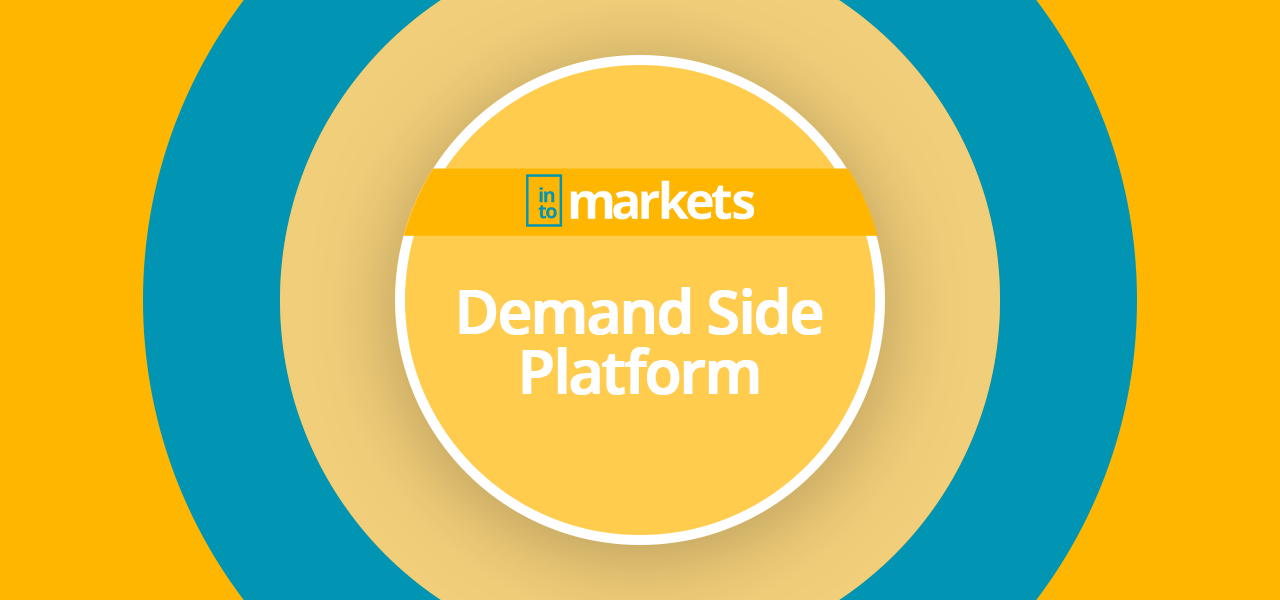What is a demand-side platform?
A Demand Side Platform (DSP) belongs to the automated trading and bidding on digital advertising spaces within online marketing and is an essential part of programmatic advertising. The DSP is a platform that automates the purchase of advertising space and advertising inventory using various algorithms. The DSP accumulates stock from multiple sources, including Ad Networks and Sell Side Platforms (SSP). The price calculation is based on the available delivery options of the relevant advertising inventory and Real Time Bidding
The user benefit of a DSP is to optimize the purchase of inventory and thus to give the buyers the possibility to use this data automatically within their advertising campaigns. The goal of this automation is to increase campaign efficiency. This includes, among other things, that campaigns are only switched where it makes the most sense for the buyer.
Top 10 demand-side platform providers
As an advertiser, there are many different DSPs to choose from to play out and control his programmatic display campaigns. While the topic has been known and used in the Google and Facebook context for quite some time, CPM-based display marketing is still entirely “new” at the e-commerce giant Amazon. The exciting thing about it is that there is an enormous number of data records available here that can be precisely targeted and advertised for specific products. You can find more about this on our Amazon DSP page.
Following an article from clockworktalent.com, these providers are among the top 10 DSPs:
- Facebook Ads Manager / Facebook For Business
- rocket fuel
- MediaMath
- Amazon DSP (formerly “Amazon Advertising Platform, AAP for short)
- DoubleClick by Google
- LiveRamp
- Choozle
- TubeMogul Programmatic Advertising Software
- BrightRoll Smart Video Advertising (by Yahoo!)
- AppNexus, International Internet Advertising and Ad Management Software
What is the task of a demand-side platform?
In addition to the technical connection to the various supply channels, the main task of a DSP is to check and evaluate potential advertising insertions within milliseconds continuously. Algorithms based on the bidding rules and defined strategies are used for this purpose.
How does a demand-side platform work?
First and foremost, a DSP is a technology platform that provides services and/or support. The offer is aimed at agencies and advertisers who want to purchase display, video or mobile ads to generate ad impressions. The demand side is the side that requires advertising inventory and advertising space. The publishers (supply side) in turn would be Ad Networks, Ad Exchanges Networks and Supply Side Platforms (SSP) which ensure that ad impressions are made available on the demand side (DSP). A clear advantage of this approach for buyers is that DSP’s have greater access to advertising networks, thanks to the implementation of real-time bidding, the price per impression is automatically determined by comparing supply and demand. Not only can the buyer weigh the best price for himself, but he can also take advantage of the reach of multiple networks. The buyer only has to give the DSP the necessary input. The DSP is usually able to monitor the defined criteria continuously and thus optimize the best possible campaign efficiency.
There are three types of programmatic DSP’s
Self-Serve Demand Side Platform
The Self Serve Demand Side Platform is probably the most popular among DSP’s. The campaign set-up and continuous optimization are in the hands of the advertisers.
Advantages of the Self-Serve DSP:
- campaigns can be started and stopped whenever the advertiser wants
- The advertiser can connect to any traffic source available on the platforms
- The Ad Spending is fully available to the advertiser
Disadvantages of the Self-Serve DSP:
- A little time should be invested to become familiar with the principle of DSP
- Need for much manual work
- The ad performance should be checked daily
Full-service DSP
Full-service DSPs require the sales representative to be involved in the digital advertising process. After signing up for the full-service DSP, a manager should help set up, launch and manage the advertising activities.
Advantages of the Full-Service DSP:
- An examination of the specifics of a DSP is not necessary
- Time-efficient, as the set-up and management is transferred to other hands
- The assigned manager can help with optimizations and technical problems
Disadvantages of the Full-Service DSP:
- No control over ad campaigns
- When starting/stopping or making changes, the manager must be contacted first
- The assigned manager may not be knowledgeable enough to manage the campaigns as efficiently as possible
Hybrid DSP
A Hybrid Demand Side Platform combines Self-Serve and Full-Service DSP’s and can be automated or manually handled as needed
Importance of the demand side platform for online marketing
DSP’s are becoming a natural successor of Ad Networks; a clear differentiator are the well-working algorithms anyway. However, transparency and neutrality in the market must be maintained. Critics fear a conflict of interest in cooperation between Ad Networks and other publishers. Because in precisely, this transparency lies a clear advantage of DSP’s.






